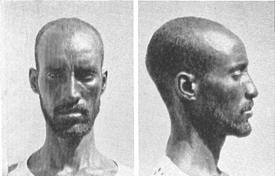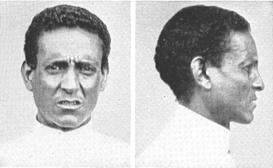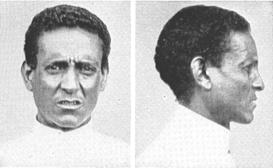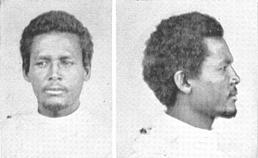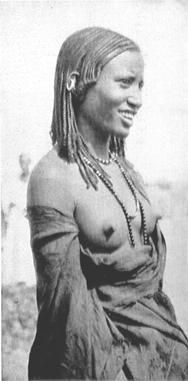|
(Photographic Supplement, Plate 20)
Mediterranean Race
FIG. 2 (2 views). Closer to the standard Mediterranean type of Arabia and North Africa is this senile Agau, a member of a fast diminishing group of Hamitic-speaking aborigines in the kingdom of Gojjam in northern Ethiopia. Although his skin is dark, his hair is nearly straight, and his measurements as well as his cranial and facial features are purely or almost purely Mediterranean. He shows no visible signs of negroid admixture, although from a purely genetic standpoint some must be present.
FIG. 3 (2 views). This individual is a tall, slender Semitic-speaking Ethiopian from the kingdom of Shoa. Except for his hair form he is essentially white and Mediterranean. His skin is a sallow yellowish, of a hue often seen among attenuated negro-white hybrids in America.
FIG. 4 (2 views). A Hamitic-speaking Wollega Galla, frizzly haired but otherwise not specifically negroid. There is a non-negroid brachycephalic strain in Ethiopia, with heavy browridges and a strong facial bony structure. This individual shows some traits characteristic of this element.
FIG. 5 (1 view, © Karakashian Bros. Tropical Photo Stores, Khartoum). The Mediterranean quality found among the partly negroid Beja and Bisharin is most evident in the female sex. Their bodily build and breast form, as well as their facial features and hair form, show this especially. This Baggara woman from the Anglo-Egyptian Sudan is less negroid than the majority.
|
